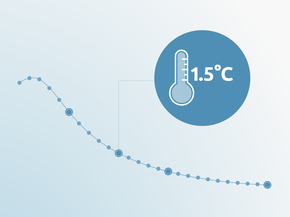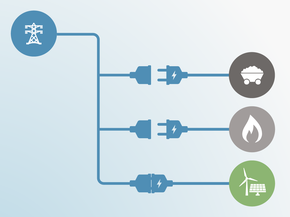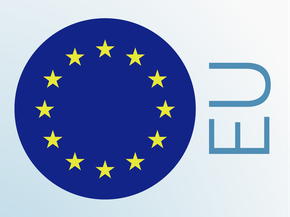Current Policy Projections
Economy-wide
Switzerland is expected to reduce its emissions to 46 MtCO2e by 2020 and 42 MtCO2e by 2030 (excluding LULUCF), under its current policies. These emission levels are equivalent to a 14% and 22% reduction below 1990 levels, respectively (excluding LULUCF). Thus, Switzerland falls short of meeting its 2030 target of a 30% reduction in domestic emissions below 1990 levels suggested by the Federal Council, let alone its overall 50% reduction below 1990 levels by 2030 set out in its NDC. However, its NDC may be partially met through the use of carbon credits from international mechanisms.
According to the government’s estimates, the adoption of the previous version of the amendment of the CO2-Act would have resulted in emissions reduction in 2030 of 33% below 1990. While the currently discussed version of the amendment is not final, if adopted it will result in possibly even more emissions reductions than the amendment rejected in December 2018.
The most relevant cross-sectoral climate policy is the carbon levy charged on fossil fuels. Due to a slower than expected decrease in emissions, the fee was increased in 2018 from CHF 84 (USD 83) to CHF 96 (USD 95) per tonne of CO2 (Bundesamt für Umwelt, 2017). The combustion of different fossil fuels is charged depending on their emissions intensity, e.g. light heating oil is charged with CHF 254.40 for 1000 litre whereas natural gas is charged 255.40 for 1000 kg of natural gas (Schweizerische Eidgenossenschaft, 2018). The current draft of the CO2-Act amendment would allow for an increase of the levy to CHF 210 (USD 208) if the country is not on the path to achieve its emissions reduction goals (Die Bundesversammlung der Schweizerischen Eidgenossenschaft, 2019).
The majority of the proceeds from the levy is reimbursed to the citizens. Under the CO2-Act now in force, the remaining annual revenue is spent on emissions reduction in the building sector (CHF 300 million (USD 298 million)) and a further CHF 25 million (USD 25 million) on the Technology Fund (Der Bundesrat, 2012a). In the future these two streams of funding are to be merged into the Climate Fund that will support energy efficiency measures in the buildings sector as well as technological innovation. The Fund will be capped at CHF 450 million (USD 445 million) annually (Die Bundesversammlung der Schweizerischen Eidgenossenschaft, 2019).
Another cross-sectoral instrument influencing greenhouse gas emission is the emissions trading scheme. Companies participating in the emissions trading are excluded from the obligation to pay the emissions levy. In March 2019, after two years of negotiations, the Swiss Parliament adopted a law linking the Swiss emissions trading scheme with the European EU ETS starting on 1 January 2020. While both systems will continue to function separately, the emissions certificates can be used interchangeably between the two systems (Bundesamt für Umwelt, 2019c). The much higher prices of emissions allowances under the EU ETS than under the Swiss emissions trading - €25 versus €7, respectively – will accelerate emissions reductions by the emitters responsible for a third of emissions resulting from the combustion of fossil fuels (EEX, 2019; Swiss Federal Audit Office, 2017).
Energy supply
In 2018 over 97% of electricity in Switzerland was generated from renewable (mostly hydro) or nuclear sources of energy (VSE, 2019). As a result, the Swiss electricity sector has a very low carbon intensity of below 30 gCO2/kWh – significantly below that of the EU.
Electricity emissions intensity
A May 2017 referendum adopted the Energy Strategy 2050, a package of measures aiming at increasing energy efficiency, reduction of CO2 emissions, and steadily replacing nuclear energy by renewables (Bundesamt für Energie, 2018a). Many of these measures were included in the reform of the Energy Law that went into effect in January 2018.
According to the law, nuclear energy is set to be steadily replaced by renewables. By 2035 electricity generation from hydro power plants should remain at the current level of around 37.4 TWh. Electricity generation from non-hydro renewables should increase from around 3.3 TWh to 11.4 TWh in the same period. The Law also sets the goal of decreasing energy consumption by 43% and electricity consumption by 13% below 2000 levels by 2035. It also introduces some changes to the feed-in tariffs including shortening the period during which installations receive the tariffs from 20 to 15 years (Die Bundesversammlung der Schweizerischen Eidgenossenschaf, 2018; VSE, 2019).
Industry
Similar to the EU, Switzerland also uses an emissions trading scheme (ETS) to lower emissions from large energy intensive entities. However, the Swiss ETS is much smaller than the European ETS, not only because of the smaller market but also due to the fact that the emissions generated by 54 companies in the power, cement, pharmaceutical, refinery, paper, district heating, and steel sectors covered by the scheme represent only 10% of the country’s emissions. Emissions from the sector were capped in 2013 at 5.63 MtCO2, and required to be reduced by 1.74% per year in order to reach a target of 4.91 MtCO2 in 2020 (13% reduction on 2013 levels) (Mission of Switzerland to the European Union, 2017).
An examination by the Swiss Federal Audit Office came to the conclusion that, in its current form, the Swiss ETS “generates hardly any incentives for reductions“. The audit office found several regulatory shortcomings, calling the impact of the ETS into question. A high number of emissions allowances allocated free of charge decreased the willingness of companies to invest in energy efficiency. An annual decrease of the cap by 1.74%, which was below the overall emissions reduction, has led to an oversupply of allowances and consequently low prices. Without any reforms, the audit office found the oversupply of allowances would reach 4.5 million certificates in 2020, equivalent to 95% of the overall cap in 2013 (Swiss Federal Audit Office, 2017). The small size of the market further worsens the oversupply of allowances in case of an unexpected production stoppage or increase, and the resulting sudden changes in demand or supply of allowances.
To deal with the allowances’ price volatility, in 2011 the European Commission and Swiss government opened negotiations on linking both carbon markets. In August 2017, the European Commission tabled a proposal to finalise the agreement with Switzerland. While the price of allowances has been increasing in the EU ETS and reached over €25, the price of Swiss allowances has fallen from CHF 40 (USD 40) in 2014 to CHF 8 (USD 8) in 2018. In March 2019 the Swiss Parliament adopted a law linking the Swiss emissions trading scheme with the European EU ETS on 1 January 2020 (Bundesamt für Umwelt, 2019c). The two systems will be linked from 1 January 2020 which – keeping in mind the small size of the Swiss emissions trading scheme - will inevitably result in higher prices for Swiss emissions allowances.
Transport
Emissions from the transport sector are responsible for almost 32% of all Switzerland’s emissions. Until 2008, emissions in transport increase up to 13% above 1990 levels. Since then, they have decreased but were still 0.9% higher than in 1990 in 2017. This is contrary to the trend of decreasing economy-wide emissions. (Bundesamt für Umwelt, 2019a).
In 2012, Switzerland adopted a regulation that included the goals of reducing emissions for newly-registered passenger cars to 130 gCO2/km. Starting in 2020, the emissions of new cars cannot exceed 95 gCO2/km. The emissions reduction goal for utility vehicles is 147 gCO2/km from 2020 onwards. The amendment of the CO2-Act would introduce an emissions reduction target for the period after 2025: between 2025 and 2029 emissions of passenger vehicles should be 15% lower than in 2020. By 2030 this reduction should – like in the case of the EU – decrease by 37.5%. Emissions from heavy duty vehicles should decrease by 30% between 2020 and 2030 (Die Bundesversammlung der Schweizerischen Eidgenossenschaft, 2019). Car importers exceeding those limits are required to pay a penalty for each gCO2/km they exceed (Der Bundesrat, 2012b).
After a continuous decrease in average emissions intensity of passenger cars from 198 gCO2/km in 2002 to 133.6 gCO2/km, their emissions started to increase in 2017 and 2018 – by 0.5 and 3.7 gCO2/km respectively. Emissions intensity of light duty vehicles continued to decrease from 227 gCO2/km in 2008 to 183 gCO2/km in 2018 (Schweizerische Eidgenossenschaft, 2019). Both values are significantly above that of the European passenger and light-duty vehicles with 120 and 158 gCO2/km, respectively (European Commission, 2019).
Despite the clear need to take more action, the penalty for the exceedance was decreased for the fourth and each following gCO2/km of exceedance from CHF 142.50 to 104.50 (Bundesamt für Energie, 2018b). This will reduce the costs of purchasing inefficient and carbon-intensive vehicles.
The uptake of electric vehicles is faster in Switzerland than in the EU. In 2018, around 3.2% of all vehicles sold in Switzerland were electrically chargeable vehicles. This included battery-only (1.7%) and plug-in hybrid (1.5%) vehicles. In the first half of 2019, their share increased to 4.8%, but with a significant increase in the share of battery-only (3.8%) and a decrease in plug-in hybrid vehicles (1.0%). While the uptake of electric vehicles accelerates, their share is significantly below that of some countries with a comparable level of income that makes electric cars more affordable (e.g. 13% in Sweden, 10% in the Netherlands, 61% in Norway) (ACEA, 2019b, 2019a).
In December 2018, in response to consultations with stakeholders from the auto and electricity industries, buildings sector, and local authorities, the Swiss government adopted Roadmap Electric Mobility 2050. It includes a goal of increasing the share of electric vehicles in new vehicles to 15% by 2022. Strategies towards achieving this goal are still to be developed (Bundesamt für Energie & Bundesamt für Strassen., 2018).
Such a goal is unambitious as it barely goes beyond the continuation of the increase observed between Q1 2018 (3.1% of all registered cars electrically chargeable) and Q1 2019 (5.3% of all registered cars electrically chargeable) (ACEA, 2019c, 2019b). The rate of increase in the share of electric vehicles needed to achieve a 15% share by 2022 is only just above 2% annually, far slower than what’s needed to phase-out the sale of combustion cars altogether by 2035, a goal considered compatible with the Paris Agreement (Kuramochi et al., 2018). Also, instead of any actual mechanism to decrease the role of combustion vehicles, the Roadmap instead suggests a public relations approach of “awakening of positive emotions” which may result in even more vehicles per person. With 543 vehicles per 1000 inhabitants in 2016, Swiss car ownership is around 6.3% higher than in the EU (ACEA, 2018).
The share of freight transported by rail in Switzerland in 2017 was, at 37%, much higher than in the EU (19%). However, it was significantly below the share of freight transported by rail in this country in the 1980s (around 53%). This decreasing trend was especially clearly noticeable in 2017 when the amount of products (in billions of tonne-kilometres) transported by rail decreased by 7% while the amount of products transported by road increased by 1.5% (Bundesamt für Statistik, 2018).
In a positive move, the revision of the CO2-Act introduces a levy on airplane tickets at between CHF 30 (USD 30) and CHF 120 (USD 119). When adopted, the levy will be determined by the flight distance and class (Die Bundesversammlung der Schweizerischen Eidgenossenschaft, 2019). Similar to the levy on fossil fuels, the revenue from the aviation levy will largely be reimbursed to all citizens, with some share of it flowing into the Climate Fund.
Buildings
In 2017, the buildings sector, including services and households, was responsible for almost 27% of Switzerland’s emissions, a decrease compared to 1990 when they represented around 32% of the country’s emissions. This has been the result of emissions in this sector decreasing much faster – by 26.4% between 1990 and 2017 - than in the case of the overall emissions (Bundesamt für Umwelt, 2019a). However, this decrease is still significantly below the 40% emissions reduction goal adopted in the 2012 CO2 Regulation (Der Bundesrat, 2012a).
Energy efficiency standards for buildings are decided at the regional level. Communes are allowed to introduce even stricter standards (Immopro, 2017). In 2014, the regional governments agreed that new standard - called MuKEn14 – should be implemented by all regions before 2018 and become binding in 2020. For new builds, the standard amounts to 35 kWh/m2 for single and multi-family houses. For warehouses, the standards are even stricter and should not exceed 20 kWh/m2. Each house should also be equipped with a renewable source of power amounting to at least 10 W/m2 of the living space (EnFK, 2014).
These targets have already been met by some of the buildings complying with the Swiss “Minergie” standards. There are three major categories: Minergie houses should not consume more than 55 kWh/m2 for new single houses and 90 kWh/m2 for renovations. For Minergie-P the standards are 50 kWh/m2 and 80 kWh/m2 respectively. For Minergie-A the standards are 35 kWh/m2 for both, new builds and renovations. By April 2017, there were a total of 47.253 Minergie certified buildings in Switzerland (Minergie, 2019).
The Energy Strategy 2050 will allocate 450 million Swiss francs (USD 467 million) from the Cantons and the CO2 levy to reduce buildings’ energy use by 43% below 2000 levels by 2035. It plans to achieve this by allowing an option for allocating energy-efficiency investment costs to the two following tax periods, and a tax deduction of demolition costs when replacing older buildings (Federal Office of Energy, 2017). This funding is confirmed in the draft revision of the CO2 Act, with the further specification that up to CHF 30 is to be spent on direct utilisation of geothermal energy. The emissions from the sector should decrease by 50% by 2026/2027 in comparison to 1990. To achieve this goal, Cantons should issue specific building standards (Die Bundesversammlung der Schweizerischen Eidgenossenschaft, 2019).
Agriculture
Emissions from the agriculture sector constitute around 13% of the total emissions (excluding LULUCF) – a constant share as they have been decreased at around the same pace as the overall emissions. The Climate Strategy Agriculture aims to reduce agricultural emissions by at least one third, and includes both mitigation and adaptation to climate change in the agricultural sector. Switzerland, through the Strategy, recognises that climate change challenges in the agriculture sector require changes in agronomic practices and procedures as well as industry, trade, and consumer behavioural changes (Federal Office for Agriculture, 2017).
Forestry
Except for few selected years, forestry constitutes a sink of emissions in Switzerland of between 1-4 ktCO2 annually. In 2017, over 31% of Switzerland’s area was covered by forests (Bundesamt für Umwelt, 2018). The Forest Policy 2020 aims to coordinate the ecological, economic and social demands on forests, managing forests in a sustainable manner. One objective of the Policy is to utilise forest management and wood use to contribute to reducing CO2 emissions and conserve Swiss forests to enhance their resilience (Federal Office for the Environment, 2013).
Waste
Emissions from waste sector constitute less than 1% of the Switzerland’s emissions (excluding LULUCF) and registered an absolute decrease by almost 36% between 1990 and 2017. Disposal of combustible solid wastes on landfills has been prohibited since 2000. Further measures in the waste sector include the ordinance on the avoidance and management of waste which promotes closed-loop material flows. Further improvements could be made in the reduction of environmental pollution and strengthening the reliability of the waste removal system as a whole (Swiss Confederation, 2018).
Further analysis
Latest publications
Stay informed
Subscribe to our newsletter






